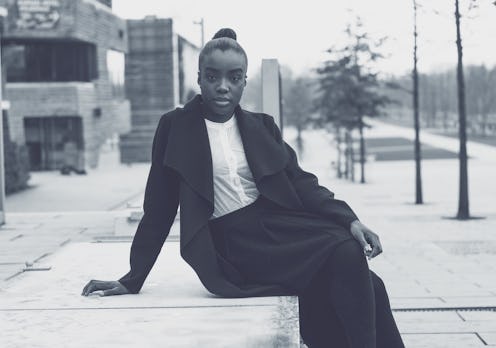Life
Disturbing News About Breast Cancer Mortality

Today, in saddening news that I don't want to believe, a new study has just come out which reveals that breast cancer kills women of color — specifically black women — disproportionately in the United States. And what's more, this disparity is actually rising. The shocking new research found that black American women were 43 percent more likely to die than their white counterparts, as reported in the medical journal Cancer Epidemiology. And as if that wasn't bad enough, it was also discovered that the odds against black women change significantly depending on which state they live in.
According to the research, which was conducted by the Sinai Urban Health Institute along with the Breast Cancer Research Foundation, the breast cancer mortality rate for black women between 2010 and 2014 was 30.7 deaths per 100,000 women. In contrast, the rate for white women was 21.4 deaths per 100,000. According to a press release from the Avon Foundation for Women, which commissioned the report, this means that black women were 43 percent more likely to die from breast cancer.
The racial disparities between women and cancer survival rates were also found to vary greatly according to geography. Women in Atlanta, Georgia, experience the largest spike in mortality rates; the New York Daily News reports that in that city, black women are 117 percent more likely to die from breast cancer than white women. These gaps are also continuing to grow across most U.S. cities; the exceptions appear to be Memphis, Tennessee; Philadelphia, Pennsylvania; and Boston, Massachusetts.
Speaking to the New York Daily News, study co-author Bijou Hunt from the Sinai Urban Health Institute, said, "We were surprised that the disparity in Black:White breast cancer mortality rates has continued to grow in the U.S. and in the majority of cities studied." Hunt noted additionally that they were "encouraged by the progress" in Memphis, Philadelphia, and Boston, but that the results of the study also drove home the fact that "there is still more work to be done."
Breast cancer is the second leading cause of cancer death among women in the United States, but the current study doesn't examine why black women suffer such a significantly bleaker prognosis; there seems to be no conclusive reason as to why these racial disparities are so bad when it comes to cancer survival rates. There are a number of possible contributors to the issue, though, including the following:
Unequal Access To Health Care
The Avon study goes some way in illuminating one of America's largest problems, which is that simply having access to health care in the States can greatly affect illness outcomes — and that access varies greatly depending on a number of socioeconomic and racial factors.
Health insurance, for example, is a big one: Minority groups have long lacked adequate health care, and research from 2014 suggested that women pay more for health care in the United States than men, but receive less coverage. It's therefore not hard to imagine how the double jeopardy of being a minority woman can affect health outcomes.
Lack of financial resources in certain communities also inhibits health care access; those in racial and ethnic minority brackets are often provided health care coverage that limits the services available to them. This, combined with the irregularity of health care in poverty-stricken communities where housing and economic worries are often given priority over doctor's appointments for adults and the idea that women wait longer in the emergency room than men, again, often places minority women in a dangerous zone of limited care.
In 2012, the Robert Wood Johnson Foundation found that Latinos and African-Americans experience 30 to 40 percent poorer health outcomes than white Americans. With all those racial and socioeconomic factors coming into play, it's no wonder why.
Racial Bias In The Medical Profession
In 2015, Forbes reported that "racial and economic inequities in screening and treatment options" contribute to the racial differences in women's breast cancer survival rates. Racial and gender bias in the medical profession is the source of much contention and is of course, extremely hard to prove; however, some pretty disturbing research from earlier this year reminded us that an implicit bias does often exist. The study saw white and black actors play "dying" patients in a hospital with 33 different physicians. Doctors displayed 7 percent less interaction with black patients than with white ones; they also tended to maintain a distance, both emotionally (e.g. less eye contact and verbal communication) and physically (standing nearer to the door rather than beside the patient and less physical touch). Additionally, in 2015, a study reported by Fox found that black cancer patients experience less one-on-one time with their doctors.
Of course, these problems are a systemic part of a health care system that, unfortunately, is influenced greatly by policy and profit instead of equality and care. It doesn't look like these issues can be solved overnight, but studies like the one above continue to make a compelling argument for radical and timely reform.